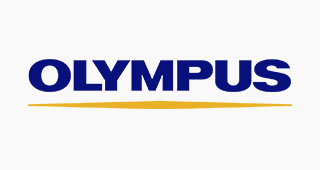SIU-WJU Article of the Month – August 2018
Pole position: mini percutaneous nephrolithotomy or flexible ureterorenoscopy?
SIU Academy®. Dasgupta R. 08/01/18; 227647
Topic: Surgical Management of Upper Urinary Tract CalculiPole position: mini percutaneous nephrolithotomy or flexible ureterorenoscopy?
CLICK HERE TO LOGIN
REGULAR CONTENT
REGULAR CONTENT
Login now to access Regular content available to all registered users.
To have an exclusive access to the entire content available on SIU Academy, become an SIU Member here.
To have an exclusive access to the entire content available on SIU Academy, become an SIU Member here.
Abstract
Discussion Forum (0)
Rate & Comment (0)
Purpose
This study aims to comparatively evaluate clinical outcomes of mini-PCNL and FURS for treating urinary tract calculi in a single session.
Methods
A systematic search using electronic databases was performed for studies comparing mini-PCNL and FURS for the treatment of urinary tract calculi. The primary outcome measurements were stone-free rates (SFRs) and complication rates for both techniques. Secondary outcome measurements were to compare patient demographics, operative duration, and inpatient stay. Meta-analysis was performed with Review Manager version 5.3 software.
Results
Sixteen studies on 1598 patients (n = 877 for mini-PCNL and n = 721 for FURS) met inclusion criteria. Demograph-ics including age (p = 0.26), body mass index (BMI) (p = 0.51), and gender ratio (p = 0.6), were similar in both groups. Over-all, SFR was significantly greater in the mini-PCNL group compared to the FURS group (n = 763/877, 89.3 ± 8.4% versus n = 559/721, 80.1 ± 13.3% [OR 2.01; 95% CI 1.53–2.64; p < 0.01]). Duration of inpatient stay was significantly greater in the mini-PCNL group compared to the FURS group (n = 877, 4 ± 1.6 days versus n = 721, 2.5 ± 2.2 days, respectively [WMD: 1.77; 95% CI 1.16–2.38, p < 0.01]. Overall complication rates were not significantly different between mini-PCNL and FURS (n = 171/877, 19.5 ± 19.1% versus n = 112/721, 15.5 ± 18.9%, respectively [OR 1.43; 95% CI 0.85–2.4, p = 0.18]).
Conclusions
Mini-PCNL is associated with greater SFRs and longer inpatient stay compared to FURS. Complication rates were similar for both techniques. The advantages and disadvantages of both technologies should be familiar to urologists and conveyed to patients prior to urological intervention for nephrolithiasis.
Keywords
Flexible ureteroscopy | Flexible pyeloscopy | Flexible ureteropyeloscopy | Percutaneous nephrolithotomy | Miniaturised percutaneous nephrolithotomy
Abbreviations
FURS Flexible ureteropyeloscopy
PCNL Percutaneous nephrolithotomy
Mini PCNL Miniaturised percutaneous nephrolithotomy
This study aims to comparatively evaluate clinical outcomes of mini-PCNL and FURS for treating urinary tract calculi in a single session.
Methods
A systematic search using electronic databases was performed for studies comparing mini-PCNL and FURS for the treatment of urinary tract calculi. The primary outcome measurements were stone-free rates (SFRs) and complication rates for both techniques. Secondary outcome measurements were to compare patient demographics, operative duration, and inpatient stay. Meta-analysis was performed with Review Manager version 5.3 software.
Results
Sixteen studies on 1598 patients (n = 877 for mini-PCNL and n = 721 for FURS) met inclusion criteria. Demograph-ics including age (p = 0.26), body mass index (BMI) (p = 0.51), and gender ratio (p = 0.6), were similar in both groups. Over-all, SFR was significantly greater in the mini-PCNL group compared to the FURS group (n = 763/877, 89.3 ± 8.4% versus n = 559/721, 80.1 ± 13.3% [OR 2.01; 95% CI 1.53–2.64; p < 0.01]). Duration of inpatient stay was significantly greater in the mini-PCNL group compared to the FURS group (n = 877, 4 ± 1.6 days versus n = 721, 2.5 ± 2.2 days, respectively [WMD: 1.77; 95% CI 1.16–2.38, p < 0.01]. Overall complication rates were not significantly different between mini-PCNL and FURS (n = 171/877, 19.5 ± 19.1% versus n = 112/721, 15.5 ± 18.9%, respectively [OR 1.43; 95% CI 0.85–2.4, p = 0.18]).
Conclusions
Mini-PCNL is associated with greater SFRs and longer inpatient stay compared to FURS. Complication rates were similar for both techniques. The advantages and disadvantages of both technologies should be familiar to urologists and conveyed to patients prior to urological intervention for nephrolithiasis.
Keywords
Flexible ureteroscopy | Flexible pyeloscopy | Flexible ureteropyeloscopy | Percutaneous nephrolithotomy | Miniaturised percutaneous nephrolithotomy
Abbreviations
FURS Flexible ureteropyeloscopy
PCNL Percutaneous nephrolithotomy
Mini PCNL Miniaturised percutaneous nephrolithotomy
Purpose
This study aims to comparatively evaluate clinical outcomes of mini-PCNL and FURS for treating urinary tract calculi in a single session.
Methods
A systematic search using electronic databases was performed for studies comparing mini-PCNL and FURS for the treatment of urinary tract calculi. The primary outcome measurements were stone-free rates (SFRs) and complication rates for both techniques. Secondary outcome measurements were to compare patient demographics, operative duration, and inpatient stay. Meta-analysis was performed with Review Manager version 5.3 software.
Results
Sixteen studies on 1598 patients (n = 877 for mini-PCNL and n = 721 for FURS) met inclusion criteria. Demograph-ics including age (p = 0.26), body mass index (BMI) (p = 0.51), and gender ratio (p = 0.6), were similar in both groups. Over-all, SFR was significantly greater in the mini-PCNL group compared to the FURS group (n = 763/877, 89.3 ± 8.4% versus n = 559/721, 80.1 ± 13.3% [OR 2.01; 95% CI 1.53–2.64; p < 0.01]). Duration of inpatient stay was significantly greater in the mini-PCNL group compared to the FURS group (n = 877, 4 ± 1.6 days versus n = 721, 2.5 ± 2.2 days, respectively [WMD: 1.77; 95% CI 1.16–2.38, p < 0.01]. Overall complication rates were not significantly different between mini-PCNL and FURS (n = 171/877, 19.5 ± 19.1% versus n = 112/721, 15.5 ± 18.9%, respectively [OR 1.43; 95% CI 0.85–2.4, p = 0.18]).
Conclusions
Mini-PCNL is associated with greater SFRs and longer inpatient stay compared to FURS. Complication rates were similar for both techniques. The advantages and disadvantages of both technologies should be familiar to urologists and conveyed to patients prior to urological intervention for nephrolithiasis.
Keywords
Flexible ureteroscopy | Flexible pyeloscopy | Flexible ureteropyeloscopy | Percutaneous nephrolithotomy | Miniaturised percutaneous nephrolithotomy
Abbreviations
FURS Flexible ureteropyeloscopy
PCNL Percutaneous nephrolithotomy
Mini PCNL Miniaturised percutaneous nephrolithotomy
This study aims to comparatively evaluate clinical outcomes of mini-PCNL and FURS for treating urinary tract calculi in a single session.
Methods
A systematic search using electronic databases was performed for studies comparing mini-PCNL and FURS for the treatment of urinary tract calculi. The primary outcome measurements were stone-free rates (SFRs) and complication rates for both techniques. Secondary outcome measurements were to compare patient demographics, operative duration, and inpatient stay. Meta-analysis was performed with Review Manager version 5.3 software.
Results
Sixteen studies on 1598 patients (n = 877 for mini-PCNL and n = 721 for FURS) met inclusion criteria. Demograph-ics including age (p = 0.26), body mass index (BMI) (p = 0.51), and gender ratio (p = 0.6), were similar in both groups. Over-all, SFR was significantly greater in the mini-PCNL group compared to the FURS group (n = 763/877, 89.3 ± 8.4% versus n = 559/721, 80.1 ± 13.3% [OR 2.01; 95% CI 1.53–2.64; p < 0.01]). Duration of inpatient stay was significantly greater in the mini-PCNL group compared to the FURS group (n = 877, 4 ± 1.6 days versus n = 721, 2.5 ± 2.2 days, respectively [WMD: 1.77; 95% CI 1.16–2.38, p < 0.01]. Overall complication rates were not significantly different between mini-PCNL and FURS (n = 171/877, 19.5 ± 19.1% versus n = 112/721, 15.5 ± 18.9%, respectively [OR 1.43; 95% CI 0.85–2.4, p = 0.18]).
Conclusions
Mini-PCNL is associated with greater SFRs and longer inpatient stay compared to FURS. Complication rates were similar for both techniques. The advantages and disadvantages of both technologies should be familiar to urologists and conveyed to patients prior to urological intervention for nephrolithiasis.
Keywords
Flexible ureteroscopy | Flexible pyeloscopy | Flexible ureteropyeloscopy | Percutaneous nephrolithotomy | Miniaturised percutaneous nephrolithotomy
Abbreviations
FURS Flexible ureteropyeloscopy
PCNL Percutaneous nephrolithotomy
Mini PCNL Miniaturised percutaneous nephrolithotomy
Code of conduct/disclaimer available in General Terms & Conditions
{{ help_message }}
{{filter}}







